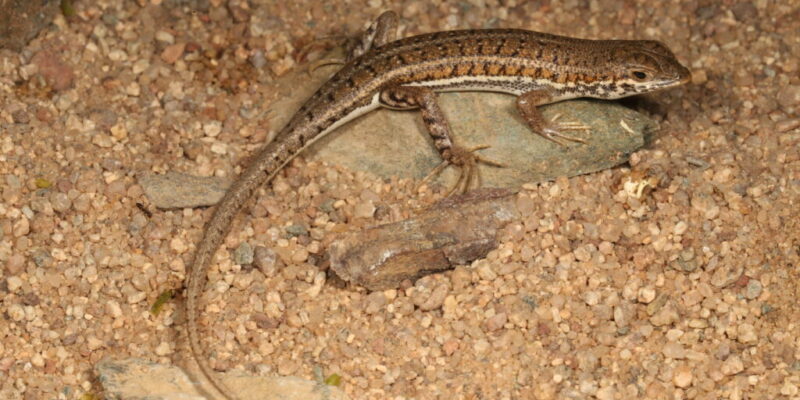
In the rural expanse of Angola, a distinctive creature with a lengthy tail darted through the sandy terrain on a farm in Namibe Province. This mottled creature, with ambiguous intentions, either sought refuge in its burrow or scoured the landscape for sustenance; its purpose remained uncertain.
The routine of the farm was abruptly disrupted as scientists on a research expedition captured the peculiar animal. Subsequent examinations revealed that it belonged to a previously undiscovered species. This revelation marked a significant find in the expansive study of lizards across the southern African nation of Angola.
The farm in Namibe Province was merely one stop in an extensive multi-year investigation conducted by researchers. The study, documented in the Bulletin of the American Museum of Natural History on February 20, sheds light on the diverse and previously unknown species thriving in the unexplored corners of Angola.
Researchers had an ambitious goal: document every species of the Trachylepis lizard genus in Angola, the study said. The country had an “extraordinary diversity” of these lizards, known as skinks, writes The Miami Herald.
During their surveys in Namibe Province, researchers encountered some speckled skinks with unique snouts that didn’t match any known species. They took a closer look and realized they’d discovered a new species: Trachylepis wilsoni, or Wilson’s wedge-snouted skink.
Wilson’s wedge-snouted skinks are considered “medium-sized,” reaching about 5.6 inches in length, the study said. They have a “cylindrical” body, “long” tail and “wedge-shaped snout.” On their eyelids, the skinks have a “transparent,” window-like scale.
A photo shows the speckled coloring of a Wilson’s wedge-snouted skink. It has a light brown coloring that blends into the surrounding rocky sand. Faint white lines run down its back as do some orange and black blotches.
The “Wilson” in the new species name is to honor Edward O. Wilson, an influential American biologist, naturalist, and author, often hailed as the “father of biodiversity.” Renowned for his groundbreaking work in myrmecology (the study of ants), Wilson’s career spanned several decades, during which he made significant contributions to ecology, evolutionary biology, and conservation.
Wilson’s work on sociobiology and his exploration of the relationship between genetics and behavior generated both acclaim and controversy. His pioneering efforts in the field of biodiversity led to the establishment of the concept of “biophilia,” highlighting the innate human connection to nature.
A two-time Pulitzer Prize winner for his books “On Human Nature” and “The Ants” (co-authored with Bert Hölldobler), Wilson’s passion for the natural world extended beyond academia, making him a prominent advocate for environmental conservation and a voice for the preservation of Earth’s rich biodiversity. He passed away on December 26, 2021, leaving a lasting legacy in the realms of science and environmental advocacy.
[Read More:









